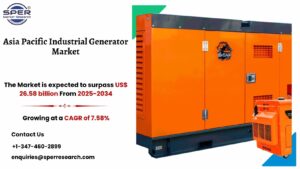Composites Market Size, Share, Scope, Revenue, Challenges and Future Business Opportunities till 2034: SPER Market Research

Composites are materials made by mixing two or more different substances to create a new material with better properties. A composite has a matrix, which is the part that holds everything together, and reinforcement, which adds strength or stiffness. The matrix is usually made of polymers, metals, or ceramics, while the reinforcement can be fibers like glass or carbon, or particles like ceramic or metal. This combination makes the material stronger, lighter, or more durable than the individual parts.
Composites aim to use the best qualities of each material while reducing their weaknesses. For example, fiberglass, a mix of glass fibers and polymer resin, is strong, corrosion-resistant, and lightweight, making it great for boatbuilding, automotive parts, and wind turbine blades.
According to SPER market research, ‘Global Composites Market Size- By Product, By Manufacturing Process, By End-User – Regional Outlook, Competitive Strategies and Segment Forecast to 2034’ state that the Global Composites Market is predicted to reach 222.15 billion by 2034 with a CAGR of 7.46%.
Drivers:
One key factor driving growth in end-user industries is the rising demand for lightweight materials, which boosts the composites market. Composites like carbon fiber and glass fiber reinforced polymers are lighter yet stronger than steel or aluminum. This makes them appealing for automotive and aerospace uses, as lighter vehicles and aircraft lead to better fuel efficiency and lower emissions. Strict emission regulations in places like Europe and North America encourage the adoption of these lightweight materials. In construction, they enable strong but manageable structures, and in renewable energy, lighter composite blades enhance energy efficiency, especially in wind turbines.
Request a Free Sample Report: https://www.sperresearch.com/report-store/composites-market?sample=1
Restraints:
The growth of composites in industries like consumer products, marine, and recreational goods is hindered by high development and manufacturing costs. The main issues are maintenance technology, process standardization, and design consistency. In automotive and aerospace sectors, manufacturers prefer conventional designs due to the absence of standardized materials and processes. This lack of standards limits the exploration of composites. Additionally, there is a shortage of trained personnel to support the adoption of composites.
The Asia Pacific region dominates the global composites market due to major producers of glass fiber and carbon fiber in China and Japan, along with developing economies in India and China. The wind energy sector is expanding significantly, making it a key consumer of composites. Additionally, the transportation industry is growing, especially as manufacturers focus more on electric vehicles. These factors contribute to the rising demand for composites in the region. Some of the key market players are Teijin Ltd, Toray Industries, Inc, Owens Corning, PPG Industries, Inc, Huntsman Corporation LLC, SGL Group, and others.
For More Information, refer to below link: –
Related Reports:
Follow Us –
LinkedIn | Instagram | Facebook | Twitter
Contact Us:
Sara Lopes, Business Consultant — USA
SPER Market Research
enquiries@sperresearch.com
+1–347–460–2899





